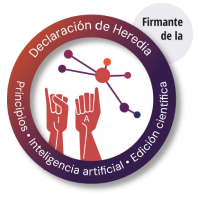 |
 |
 |
 |
 |
 |
 |
 |
 |
 |
 |
 |
Abstract
Objective: To study the mobility capacity of blind or visually impaired people in León, Guanajuato. Methodology: The analysis is based on ethnographic fieldwork involving participant observation and semi-structured interviews with four people living with some type of visual impairment in the city. Results: León is a disabling city not only because of its road infrastructure, but also because its civic culture is oriented toward inhibiting the mobility of blind or visually impaired people. Value: By introducing the concept of motility, the article seeks to contribute with information to expand the spectrum of studies on disability and mobility. Limitations: This is an exploratory study that prioritizes rapport and the collective construction of knowledge over representativeness. Conclusions: Social class, public insecurity, and street harassment should be incorporated into disability and mobility studies.
References
Asplund, K., Wallin, S., y Jonsson, F. (2012). Use of public transport by stroke survivors with persistent disability. Scandinavian Journal of Disability Research, 14(4), 289-299. doi: https://doi.org/10.1080/15017419.2011.640408
Castañeda, P. (2024). Gender and mobility: Engaging women’s mobile lives. En L. Peake, A. Datta y G. Adeniyi-Ogunyankin (coords.), Handbook on gender and cities (pp. 356-365). Northampton: Edward Elgar Publishing.
Covarrubias, A. (2013). Motorización tardía y ciudades dispersas en América Latina: definiendo sus contornos; hipotetizando su futuro. Cuadernos de Vivienda y Urbanismo, 6(11), 12-43. doi: https://doi.org/10.11144/Javeriana.cvu6-11.mtcd
Das Neves, B., Unsworth, C., y Browning, C. (2023). ‘Being treated like an actual person’: Attitudinal accessibility on the bus. Mobilities, 18(3), 425-444. doi: https://doi.org/10.1080/17450101.2022.2126794
Fallov, M. A., Jørgensen, A., y Knudsen, L. B. (2013). Mobile forms of belonging. Mobilities, 8(4), 467-486. doi: https://doi.org/10.1080/17450101.2013.769722
Fernández, F., Heredia, M., Lucioni, N., y Rusler, V. (2023). Presentación del dossier: Discapacidad y movilidad. Revista Transporte y Territorio (28), 2-10. doi: https://doi.org/10.34096/rtt.i28.13044
Ferrante, C. (2014). Renguear el estigma: cuerpo, deporte y discapacidad motriz (Buenos Aires, 1950-2010). Buenos Aires: Biblos.
Goggin, G. (2016). Disability and mobilities: Evening up social futures. Mobilities, 11(4), 533-541. doi: https://doi.org/10.1080/17450101.2016.1211821
Guber, R. (2001). La etnografía: método, campo y reflexividad. Buenos Aires: Grupo Editorial Norma.
Hernández, M. (2012). Ciegos conquistando la Ciudad de México: vulnerabilidad y accesibilidad en un entorno discapacitante. Nueva Antropología (76), 59-81. Recuperado de https://revistas-colaboracion.juridicas.unam.mx/index.php/nueva-antropologia/article/view/15197
Kaufmann, V., Bergman, M. M., y Joye, D. (2004). Motility: Mobility as capital. International Journal of Urban and Regional Research, 28(4), 745-756. doi: https://doi.org/10.1111/j.0309-1317.2004.00549.x
Kesselring, S. (2006). Pioneering mobilities: New patterns of movement and motility in a mobile world. Environment and Planning A: Economy and Space, 38(2), 269-279. doi: https://doi.org/10.1068/a37279
Martínez, A. F. (2016). La “Ciudad de los ciegos”, un entorno discapacitante: experiencias urbanas y barreras en el centro de Santiago. Boletín Electrónico de Geografía (4), 32-49. Recuperado de https://www.academia.edu/37784665/La_ciudad_de_los_ciegos_un_entorno_discapacitante_experiencias_urbanas_y_barreras_en_el_centro_de_Santiago
Merlo, M. (9 de marzo de 2025). Ni Sinaloa, ni Guerrero... El estado más violento de México es Guanajuato. ABC Internacional. Recuperado de https://www.abc.es/internacional/robo-combustible-convierte-guanajuato-estado-violento-mexico-20250303125002-nt.html?ref=https%3A%2F%2Fwww.abc.es%2Finternacional%2Frobo-combustible-convierte-guanajuato-estado-violento-mexico-20250303125002-nt.HTML
Montezuma, R. (2009). El derecho a la vida en la movilidad urbana y el espacio público en América Latina: la necesidad de un reequilibrio entre los subsistemas motorizado y no motorizado. En J. Erazo (coord.), Inter/secciones urbanas: origen y contexto en América Latina (pp. 293-300). Quito: Facultad Latinoamericana de Ciencias Sociales Ecuador (FLACSO). Recuperado de https://biblio.flacsoandes.edu.ec/libros/digital/42367.pdf
Paniagua, L. (2023). “¡Y, sin embargo, nos movemos!”. Cuerpos y experiencias de las personas con discapacidad en ciudades capacitistas. Revista Transporte y Territorio (28), 75-98. doi: https://doi.org/10.34096/rtt.i28.13048
Pyer, M., y Tucker, F. (2017). ‘With us, we, like, physically can’t’: Transport, mobility and the leisure experiences of teenage wheelchair users. Mobilities, 12(1), 36-52. doi: https://doi.org/10.1080/17450101.2014.970390
Saltes, N. (2018). Navigating disabling spaces: Challenging ontological norms and the spatialization of difference through ‘embodied practices of mobility’. Mobilities, 13(1), 81-95. doi: https://doi.org/10.1080/17450101.2017.1333279
Scribano, A. O. (2007). El proceso de investigación social cualitativo. Buenos Aires: Prometeo Libros.
Solsona, D. (2023). Biografías móviles de personas con discapacidad en territorios rurales del sur de Chile: hacia una tipología de sus movilidades. Revista Transporte y Territorio (28), 56-74. doi: https://doi.org/10.34096/rtt.i28.13047
Von der Weid, O. (2023). No caminho: técnica, movimento e ritmo na formação de cães-guia. Revista Transporte y Territorio (28), 34-55. doi: https://doi.org/10.34096/rtt.i28.13046

This work is licensed under a Creative Commons Attribution-NonCommercial 4.0 International License.
Copyright (c) 2025 Fernando Rafael Rocha Montelongo, Víctor Hugo Reyna






